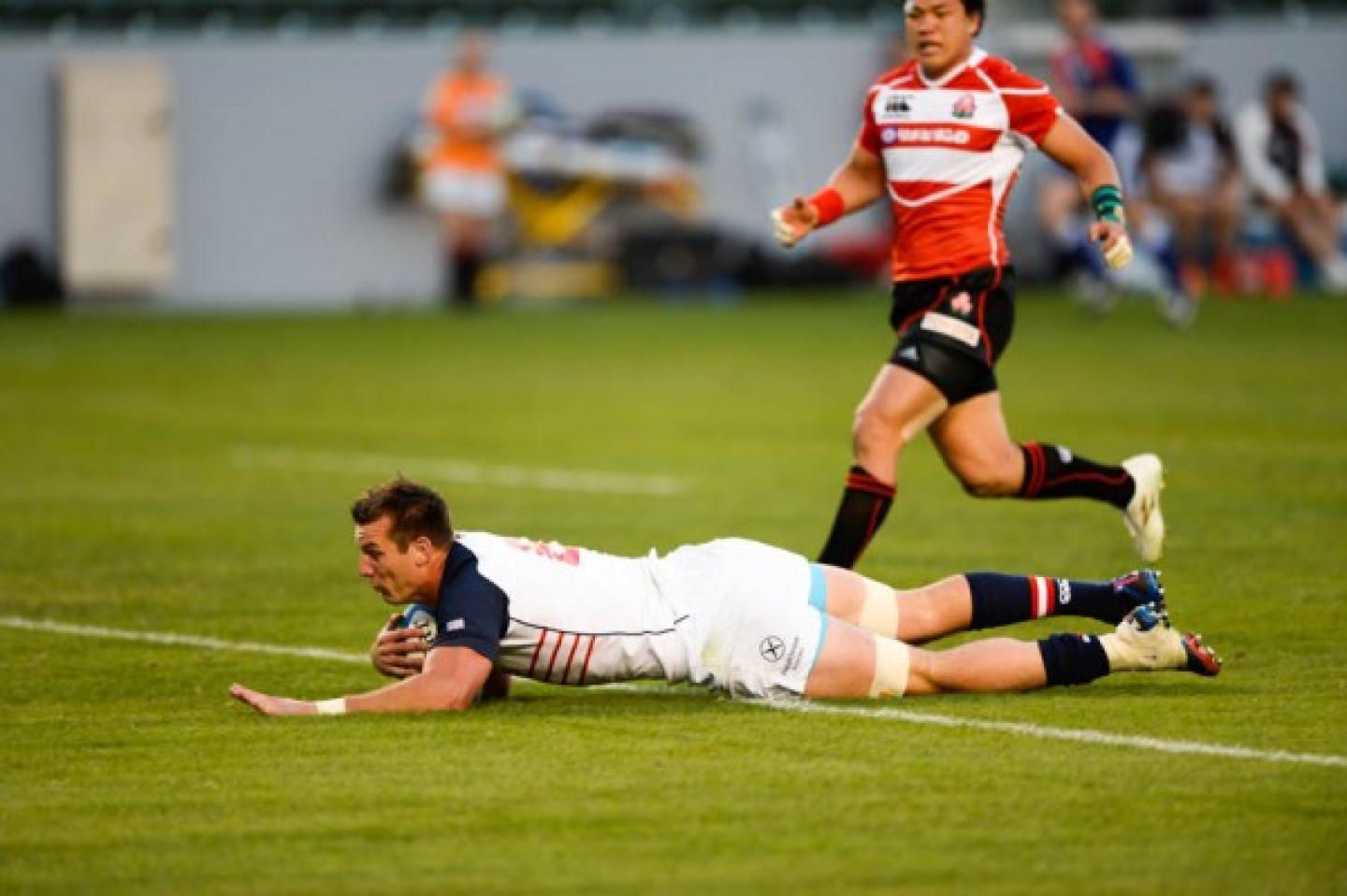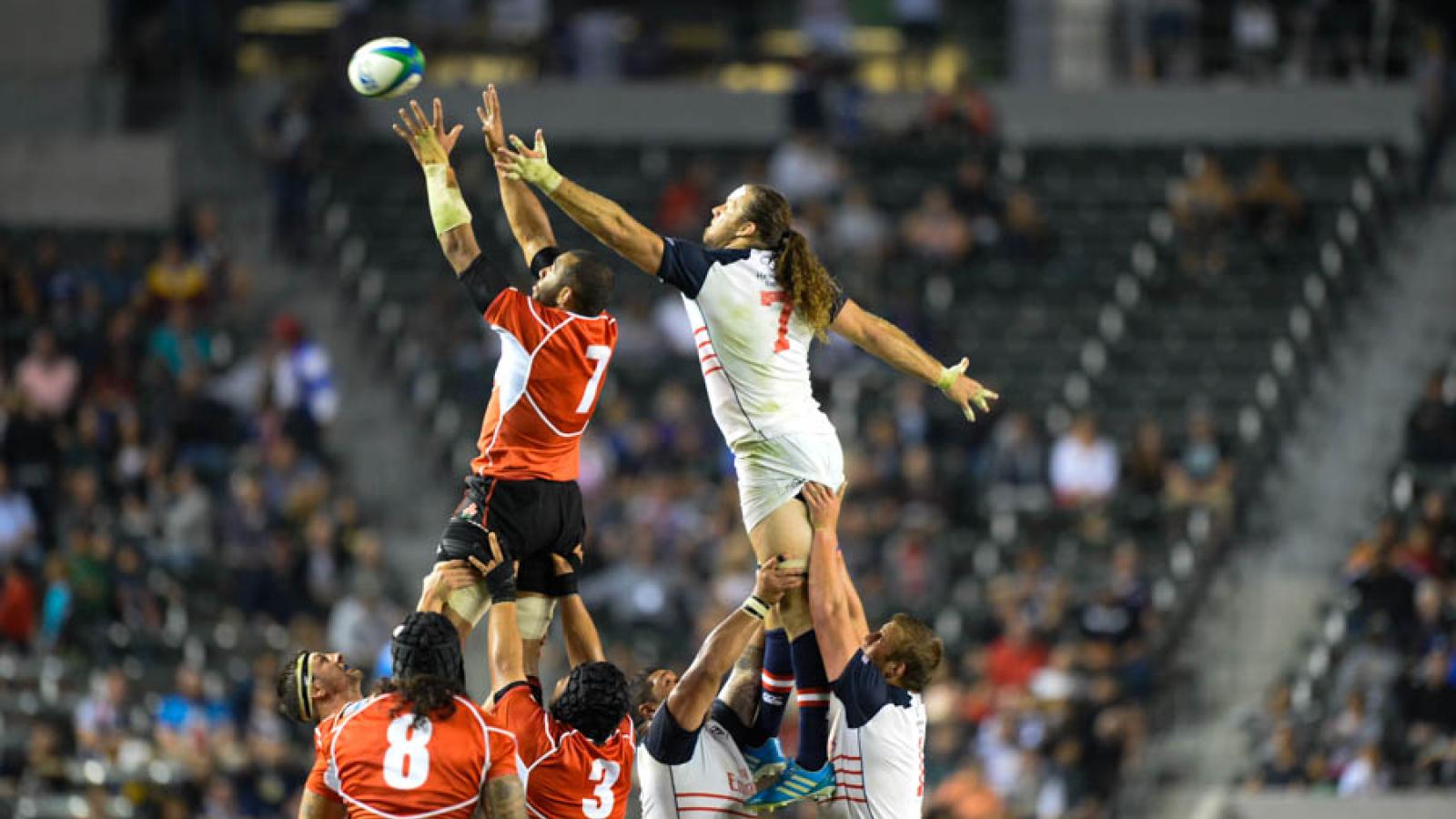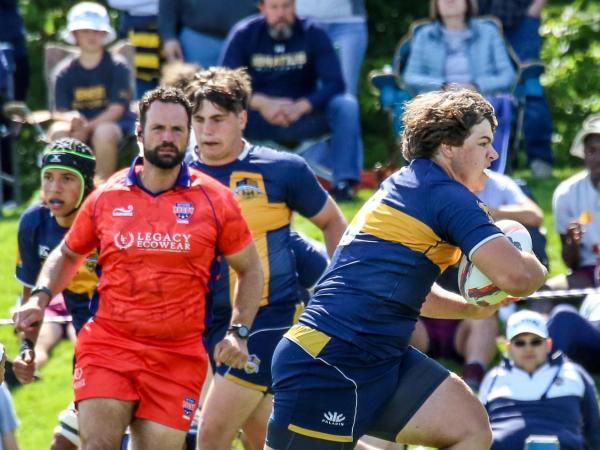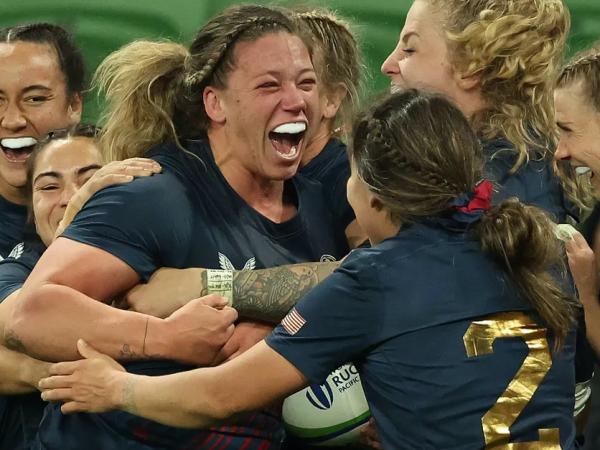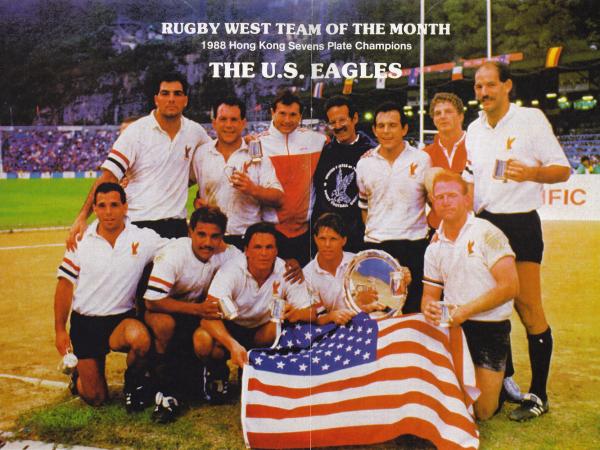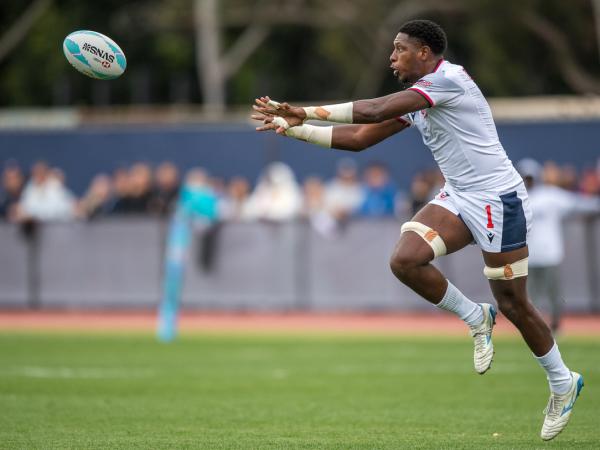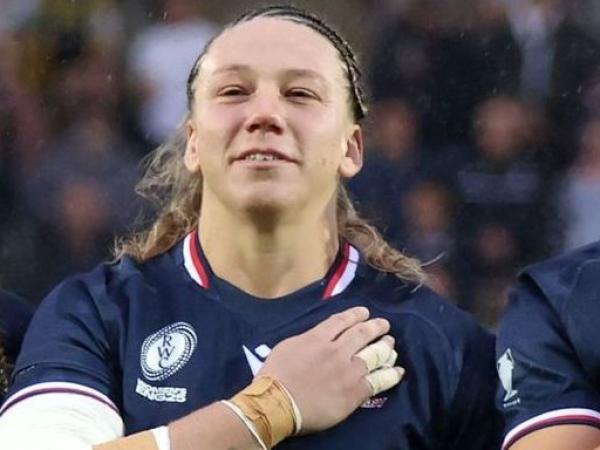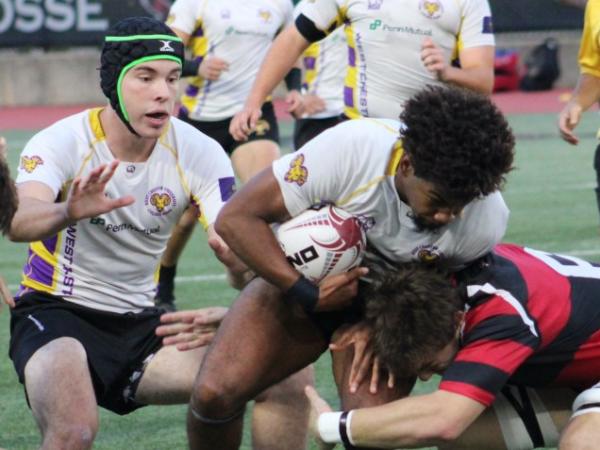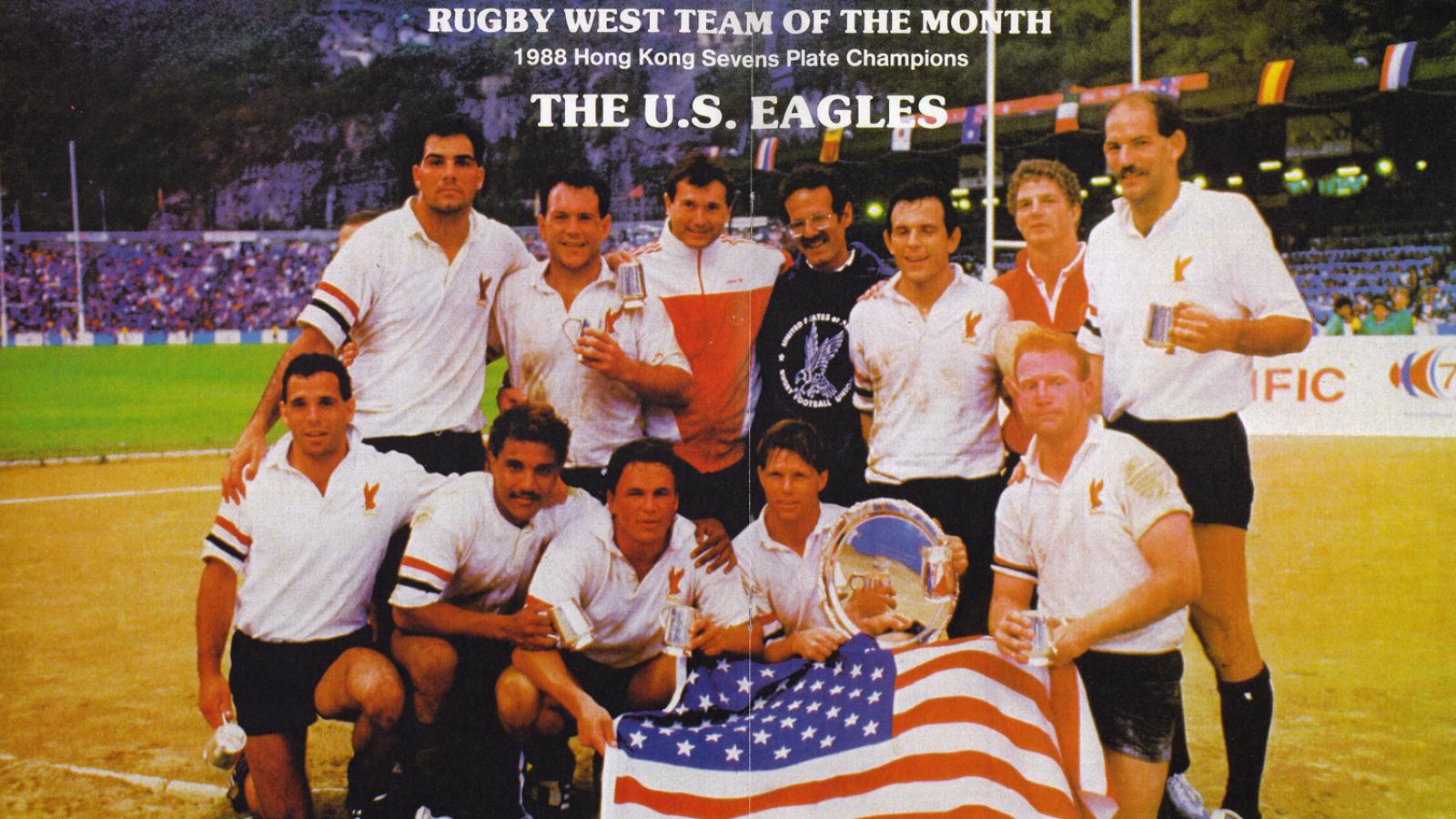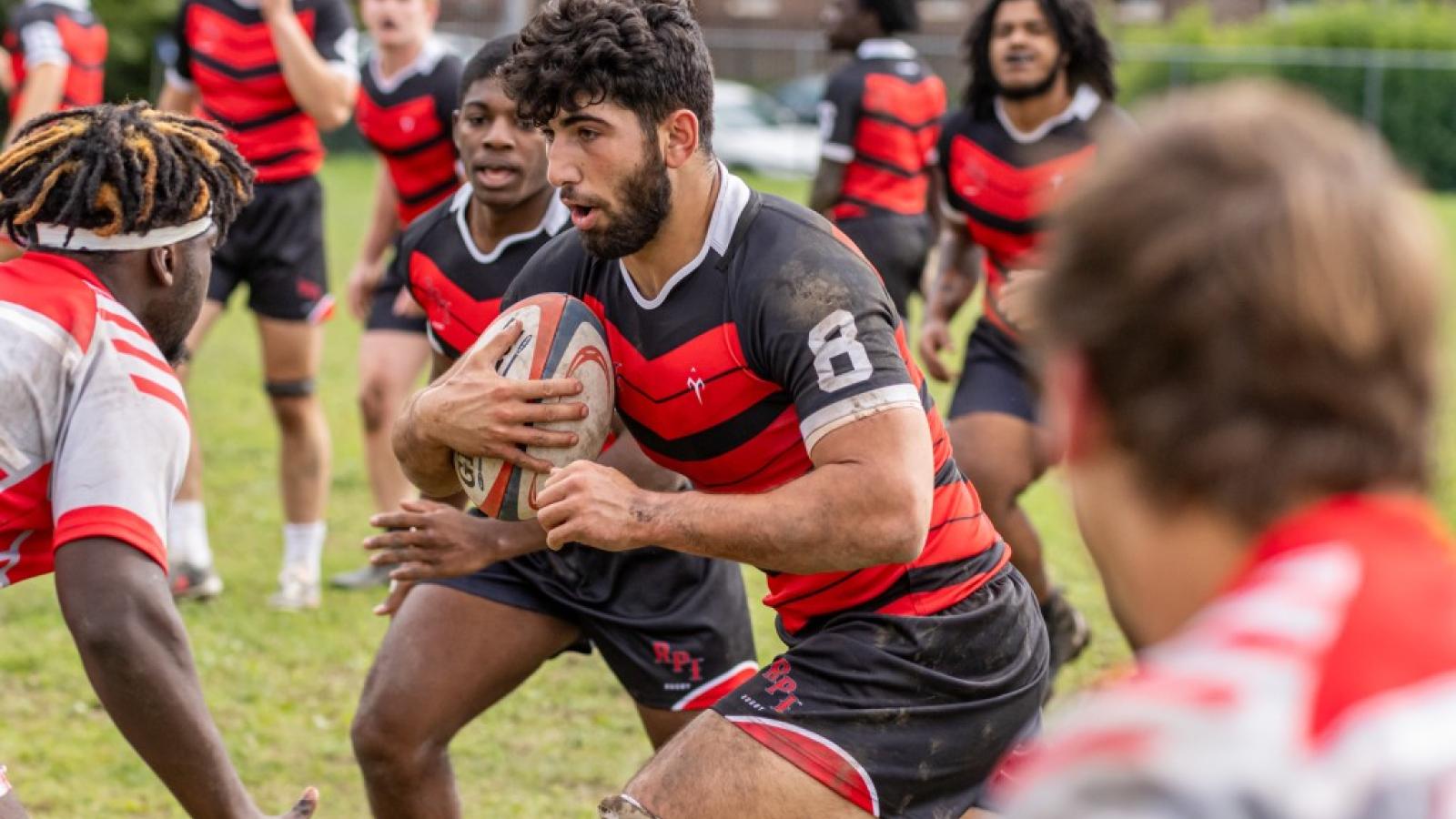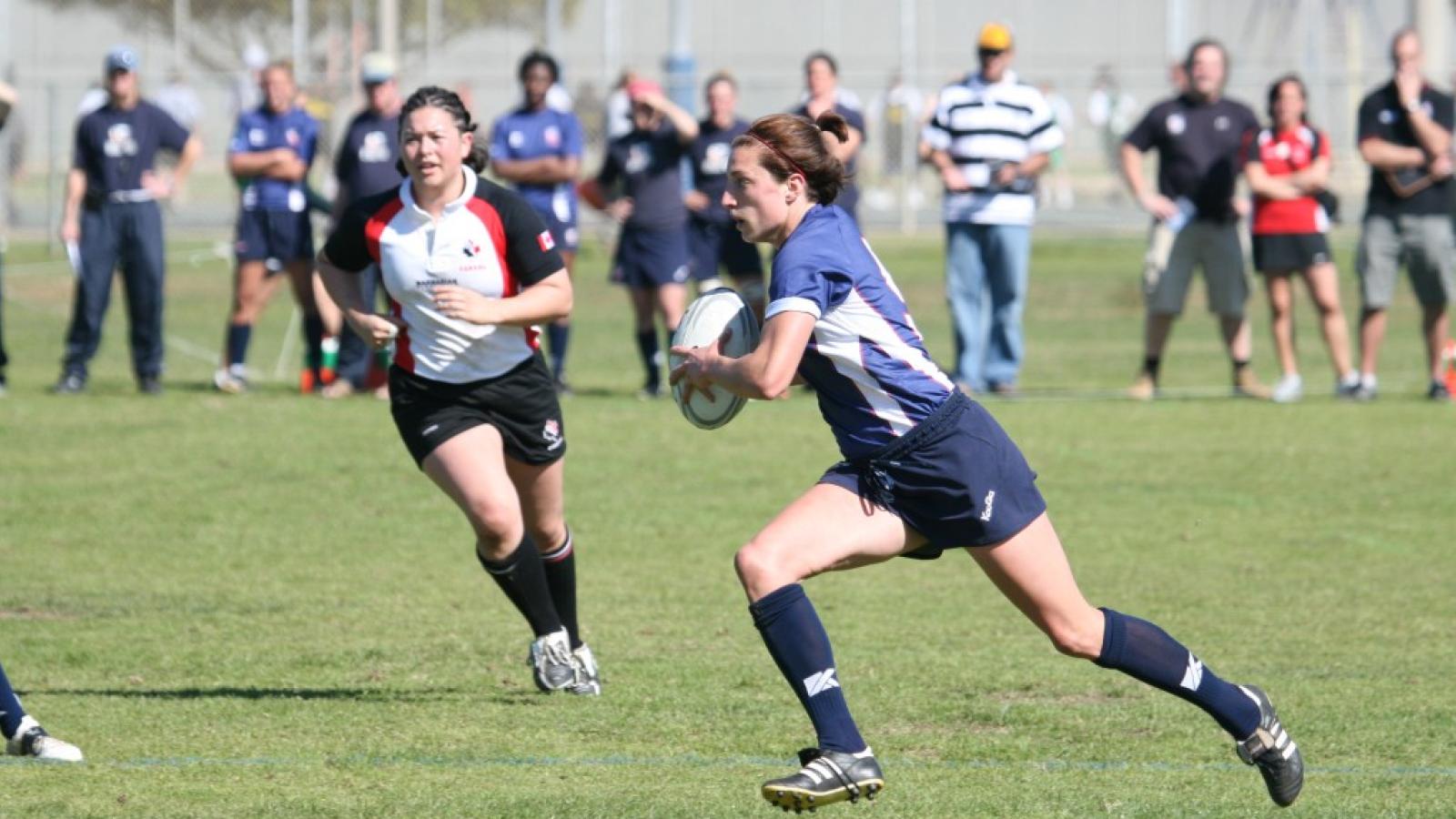While losing two games is not good news, June for the USA is shaping up to be an encouraging one, especially if they can knock off Canada this coming weekend.
The Eagles put in a creditable performance against Scotland, losing 24-6 in a game where a couple of obvious defensive breakdowns, the now inevitable scrum penalty try, and an inability to score tries.
But against Japan, the Eagles were right there, ready to win the game. Given that they haven’t beaten the Cherry Blossoms since 2003, that’s a positive thing.
The fact that Japan appeared to take control of the game early in the second half, and then the Eagles wrested the momentum back is a fact that should please all the fans.
But there’s more to do.
The Scrum. OK so the scrum didn’t disintegrate. In fact, the front row, while having to work enormously hard at it, did hold the scrum up and kept it relatively square. The scrum wasn’t a liability. However, it is still seen as a liability, and as such, referee Greg Garner of England knew beforehand who would be at fault when scrum went wonky. So twice Japanese hooker Shota Horie popped out of the scrum at crucial moments. In one case, at the end of the first half, Garner reset the scrum with Japan’s put-in, when it should have been a penalty for the USA. Ultimately, Japan got a penalty from the next scrum (another bad call which we will discuss later), but Ayumu Goromaru missed the penalty attempt.
Had the Eagles received the penalty due them, they might have been able to end the half with a score.
In the other instance, Japan scored the first of their two eightman pick tries in the second half. In the first try, it’s obvious that the USA were holding the scrum and driving back, and Horie popped up, but Garner, I think assuming that Japan was the stronger, allowed Ryu Koliniasi Holani to pick up and score. That was a damaging non-call.
Overall, the scrum was better, and the Eagles can only earn better calls by scrumming better.
And one more thing - Japan’s habit of having their flanker reach out and tie up the USA flanker had to be addressed. It’s a direct violation of Law 20.3.r, and Japan used it to score two tries. Garner missed this, as did his assistant referees, on both of Japan’s second-half tries, and that’s inexcusable.
The Fakeroo. At the end of the first half Japanese scrumhalf Fumiaki Tanaka reached in to take the ball out of the scrum, and then jumped back, as if he was passing. No. 8 Holani seemed to release the ball and bring it back. It was all skillfully done, but was, in my opinion, illegal. Later on, Tanaka faked taking the ball out of the ruck in front of the Japanese posts. That was a free kick offense. Law 16.4.f “A player must not take any action to make the opposing team think that the ball is out of the ruck while it is still in the ruck.”
Garner missed this also.
Tries Given Up. Japan’s first try was the result of poor maul defense by the USA. The players defending the maul pushed really hard, but they didn’t push as a unit. Had two players bound together and used that stability to allow them to keep their eyes up, and if someone had stayed out of the maul to see where the Japanese push was, they might have gotten out of it. Instead, Tanaka faked out Mike Petri and scored easily.
The second try was the result of some broken play, exacerbated by the fact that Seamus Kelly was being treated for an injury off the play. Kelly got back into the play, and was in position to make a key tackle, but I think he wasn’t sure if he was onside, and just guarded the player. It was probably the smart move, but at that point it was like a hockey team on a long gift - the USA players looked like they needed a breather, and Akihito Yamada just galloped in.
We’ve discussed the third try - it was a bad non-call by referee Garner and should not have been given. However, the reason there was a five-meter scrum at all was a case of bad luck. Tanaka’s box kick was too far and rolled dead. It should have been a USA scrum well away from the tryline, but a USA player tipped the ball right when it was kicked.
The fourth try was all on the Eagles. They had a lineout at their own five-meter line, and Phil Thiel’s throw was not straight. Scrum Japan.
Overall, the Eagles defended well and very aggressively. They didn’t have a lot of ball, especially in the second half, but made Japan work for it. They gave up four tries thanks to some poor execution, and a little bad luck.
Tries Scored. Japan will say they gave up three tries thanks to turnovers, and that’s quite true. Cam Dolan scored on an interception. Blaine Scully’s first try was thanks to a turnover caused by Chris Wyles (who then gathered the ball, pushed away a tackler, and got things started). Scully’s second was a total Cal combo: Japan lost the ball and former Bear Eric Fry consolidated things and made sure they had a platform. Then the ball went to Seamus Kelly, then Danny Barrett (who made a superb run) and then out to Scully.
Only the final USA try was from set piece, and it was a nice piece of rugby.
Set Piece. The USA scrum was better than in previous games, but their lineout suffered. Japan contested at the jump and stole a few, we had not straights, as well. In general, the lineout failed to provide the USA with the attacking platform they need. As they showed on the fourth try, when it fires, it’s effective.
Players. Maybe it’s time to say this now - Chris Wyles is the best fullback the USA has ever had. While we have to point out that he was outstripped by Yamada on the second try, Wyles was, overall, a huge asset to the Eagles in this game. His play to set up Scully’s first try, from the tackle to the fend to breaking another tackle, to the pass, was great rugby. His pass to Scully for the fourth try, getting whacked as he did so, was also brilliant. His kicking was very strong, and really, while the USA has had some very good fullbacks, no one has been this good for this long.
Scully scored three tries, but they weren’t cheap ones. He had to make a smart read on the first, and twice had to dive a specific way in order to touch down. My only gripe is that earlier in the game he was pulled down just short of the line and stood up straight to try to go over, when he should have stayed low, got his feet under him, and dove. Oh well, you can’t have everything.
I like Shalom Suniula at flyhalf. He’s not a destructive tackler, but how many #10s are? On attack he has all sorts of skills.
Scott LaValla and Samu Manoa seem to enjoy playing together. When they are on a rhythm on defense it’s very difficult to not feel a little scared.
Venue. It’s not much of a secret that I don’t like StubHub Centre. The press box is poorly laid out; the people who work there couldn’t care less about your experience and can be flat-out rude; the concession lines are long because the venue doesn’t care; its location isn’t convenient for anyone staying in a hotel. And then there’s the crowd, which has not delivered for two straight years.
Prospects. Canada lost to Scotland 19-17 on Saturday, showing that they, as usual, do not flinch in the face of any team. The USA and Canada are relatively evenly matched, but we haven’t seen the results for the Eagles, yet. I think in the end the battle will be about the midfield. The USA centers will have to tackle and contain the big Canadian backs. And I think the battle will be at the lineout. If the Eagles can’t win their lineout, they’re in trouble.
But what Canada now has to worry about is their defense. They were badly exposed by Japan June 7, and because of that resorted to killing the ball against Scotland - hence Scotland’s four penalty goals. The Eagles can run and just showed they can score tries. Saturday in Sacramento won’t be for any Pacific Nations Cup glory, but it will be for North American pride, and that’s enough.





